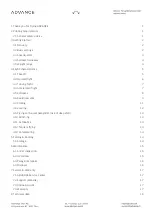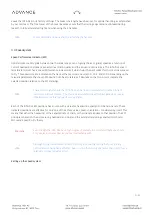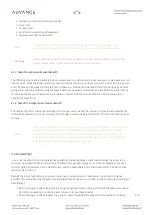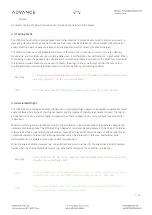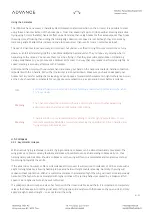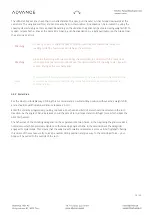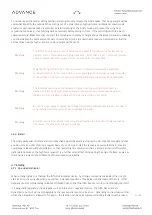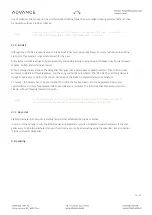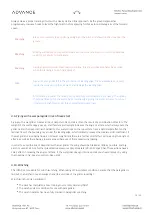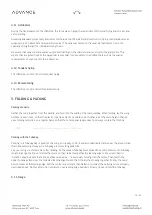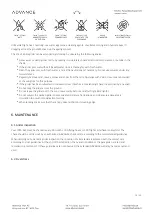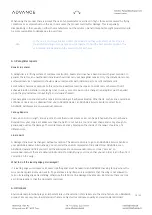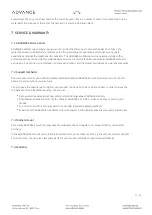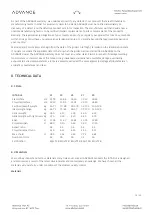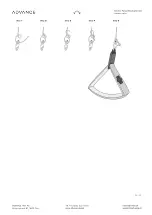
To recover keep the neutral sitting position and progressively release the inside brake. Your body weight will be
somewhat tipped to the outside. While coming out of a spiral dive of high vertical and rotational speeds some
assistance with outside brake is essential. Careful releasing of the inside brake will prevent the wing from
recovering too quickly, thus pitching back excessively before diving in front - if the turn stops with too much
speed remaining. Make sure that you start the recovery with plenty of height above the ground. Generally speaking
you should allow the same amount of time to recover as it took to enter the manoeuvre, but remember that the
vertical speed will be higher, and much more height will be used!
Warning
The IOTA DLS only comes out of a spiral dive by itself if the pilot is in a neutral sitting
position. From a steep spiral with a high sink rate – more than 14 m/s – recovery requires
active outside brake with weight shift to the outside at the same time.
Warning
Weight shifting to the inside of the turn results in increased acceleration and stable
continued rotation. In this case, active counter-braking with simultaneous weight transfer
to the outside of the turn is required to end the manoeuvre (push your body outwards).
Warning
The IOTA DLS is approved for harnesses in group GH (without rigid cross-bracing).
Harnesses in group GX (with cross-bracing) or those with very low suspension points
(carabiners) may drastically change the flying characteristics in a spiral.
Warning
Do not fly spiral dives or aggressive changes of direction with big ears applied: the raised
wing loading carried by fewer lines can damage the glider.
Warning
After recovering from a spiral dive it could be that the pilot flies into turbulence that he
has caused. Fly actively to prevent a collapse.
4.6.3. B-Stall
The whole paraglider structure and its profile shape would be severely strained by a B-stall. We recommend that
you do not carry out B-stalls on a regular basis. If you do fly a B-stall the recovery requires that the B-lines are
completely released without hesitation, so that normal flight is resumed within 2 seconds. B-stall is difficult for
light pilots because of the high force required. is a further small effect of increasing the angle of attack, as well as
there being a lower airspeed because of the reduced wing loading.
4.7. Stalling
4.7.1. One-sided stall (spin)
When circling tightly in a thermal the IOTA DLS indicates clearly, by strongly increasing brake load, the risk of a
stall. Even so, if a wing does stall you will feel a marked reduction of brake load on the inside of the turn. If this
happens you must immediately release both brake lines, so that the IOTA DLS can return to normal flight by itself.
If a wing stalls completely the paraglider will go into a spin / negative rotation. The IOTA DLS will react
dynamically, but will still be manageable by the less experienced pilot. Even so – depending on the situation from
which the paraglider is allowed to fly again – the reaction can be quite vigorous (shooting forward with a raised
11 / 20
Summary of Contents for IOTA DLS
Page 1: ...PRODUCT MANUAL IOTA DLS Product Manual Version...
Page 23: ...20 20...


